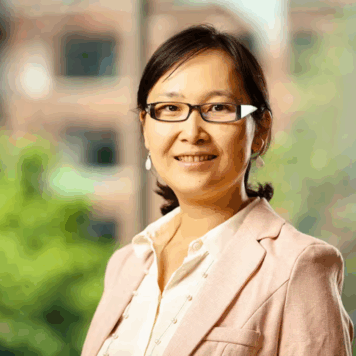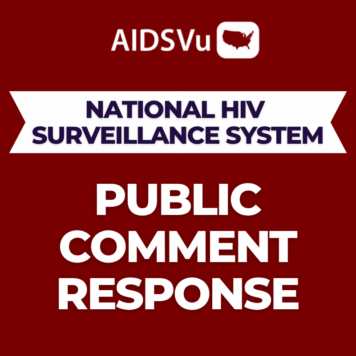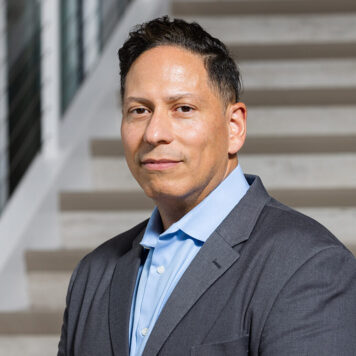Dr. Allison Mathews is the Executive Director of the Gilead COMPASS Faith Coordinating Center at Wake Forest University’s School of Divinity. Dr. Mathews is the co-founder of HIV Cure Research Day.
Q: You are helping to found a new HIV awareness day: HIV Cure Research Day, to raise public consciousness about the search for and continued need for an HIV cure. How did you become interested in working in HIV, and what has inspired you to establish this new awareness day?
A: I originally became interested in HIV because I was working on my dissertation, and my research broadly was about how Black gay men manage stigma around being Black and gay in religious spaces. Many men have to navigate being either in predominantly Black church spaces that are not always gay-affirming or going to predominantly White gay-affirming spaces that are not always Black affirming. They often talked about the challenges around navigating experiences with racism and not being able to escape their skin color, and also about navigating experiences where they were discriminated against for being same gender loving. Often, the stigma around HIV was also a tie to their identity and their experiences, even if they did not have HIV. So I started to ask questions and get more interested in HIV because of their experiences and my observations from spending time with them.
I started on a research project that got me involved in doing community engagement work around HIV clinical trials—educating people about clinical trials, doing community organizing, and using social media and other arts in creative ways to engage people about clinical trials. That led me into my postdoctoral research, where I used those methods to then create crowdsourcing contests—basically this idea of getting community-based ideas to solve problems. One of the problems that I was interested in solving, and worked with a team of scientists to solve, was how to get people engaged in finding a cure for HIV.
We hosted contests where we would give participants prizes for the most creative and best ideas. They could submit paintings, poetry, songs, ideas for apps, or ideas that we could then turn into campaign material to raise awareness about HIV clinical trials and HIV more broadly. That also expanded, so I started doing contests for PrEP, for HIV self-testing kits, and for COVID vaccine awareness. I was really using it as a mechanism to engage people about HIV.
Q: Although not yet recognized nationally, HIV Cure Research Day is recognized by the state of North Carolina as an official awareness day. Ideally, what do you hope this awareness day will do for the movement to eliminate HIV/AIDS in the United States? How can other states participate?
A: This is actually the sixth year that HIV Cure Research Day has been in existence. And it is the fifth year that it has been recognized by Governor Roy Cooper. I co-founded HIV Cure Research Day with my friend and colleague Kimberly Knight. Kimberly Knight got connected to the work because her husband died from complications with AIDS. We met when I was doing the crowdsourcing contest and she wanted to contribute her knowledge and experience around social work and public relations. We became this powerhouse couple, best friends who were doing a lot of community engagement work. I hosted a hip-hop concert around conspiracy theories about HIV cures. We did a fashion show with Sheryl Lee Ralph. We had interviews from celebrities like Viola Davis, Taraji P Henson, Shirley Caesar and Lecrae. We also partnered with radio stations. We have done a lot already to get community members involved in finding a cure for HIV.
A lot of times people think that they do not have a say or do not have any scientific knowledge to help find a cure for HIV. So why should they get involved? But there are many roles that community members can play in being involved in this work, like being on community advisory boards, helping protect research participants from undue risk in clinical trials, and helping educate people about the science around cure.
Recently, for example, it came out in the news that a fourth person was declared cured of HIV, the fourth person in the world. And she is the second person who has been cured in that way. Then there are two other people who have been cured by using a stem cell transplant and chemotherapy because they had both HIV and cancer. That is why educating the community about how people were cured and addressing the myths is important. A lot of people think that Magic Johnson is cured, for example, and he is not.
Addressing myths about how people can access medications and what it means to be cured I think is very important, because if we have learned anything from COVID-19 it is important for the public to be educated about the clinical trial process. We need to make sure that we have representation in clinical trials so that when the medications are developed, they are developed in a way that is both responsive to and reflective of the diversity of our population and that is accessible to people of all races, ethnicities and incomes.
Q: There have been a number of news stories in the last few years about advancements being made towards a cure for HIV, including stories of a few individuals who were cured as part of treatment for other illnesses. Can you speak to the progress that is being made towards finding a cure?
A: Well, they are special cases, but they are intentional. They are emerging out of research that has been done for the past 40 years of the HIV epidemic. And we build on the knowledge that we gain over time. I am a social scientist, but I can explain the basics of what they are doing.
There are ten sites as part of the Martin Delaney Collaboratory, which are research sites across the country who also have their own community advisory boards. They are all focused on finding a cure for HIV but are approaching it in different ways. The UNC Chapel Hill approach is the “shock and kill” method. The idea is that they are borrowing a medication from chemotherapy that can find latent or dormant HIV virus. These latent viruses go into our tissue and hide and do not replicate, they just go to sleep. So this medication can go into those areas of the body and wake up that virus, kick it out of those hiding places, and activate it so that we can kill the rest of the HIV virus that lays dormant in people’s bodies.
The reason why they are using that approach is that if someone is HIV positive and they stop taking their medication, then we all know that the virus will start coming back and start replicating again, oftentimes because it is in those latent dormant areas. Another way researchers are working on to try to cure HIV is through gene editing.
The two men who were cured that had both had HIV and cancer underwent a stem cell transplant and chemotherapy, where they got the stem cells from a group of people in Northern Europe who have a natural genetic mutation that is resistant to HIV. These cells do not have what they call the CCR5 receptor that HIV latches onto in your immune system, and because they do not have that receptor, HIV cannot latch onto that immune cell and then infect it and replicate and mutate in the body. So, they got stem cells, basically a bone marrow transplant, from people who had that genetic mutation and then implanted it into these two men who had both HIV and cancer. That then allowed their bodies to learn how to fight against HIV.
Timothy Ray Brown was in HIV remission for 12 years. He eventually died of cancer, unfortunately, but he was in remission for cancer as well from that treatment. So that is another way they are using gene editing to see if they can remove the CCR5 receptor from people’s immune cells and not allow HIV to replicate in people’s bodies. Those are the two big ones that I know they are using right now.
Q: Do you think that the amount of publicity around COVID-19 clinical trials, testing, and vaccination has been a benefit to raising awareness about HIV? Or do you think the distrust of the COVID-19 vaccine and the conspiracy theories that have abounded have had the opposite effect?
A: It is difficult to say because I think it is both. It is beneficial to us in that the news is willing to cover these topics. It was very difficult to get the news to cover these topics before. In that regard, if we look at the population, we had over 60% of our population get vaccinated due to education around clinical trials and clinical education. This was a mass public health education initiative that was really necessary.
I think at the same time, it also has highlighted the areas where we need work. We need to work on creating transparent and trustworthy institutions. We need a set of institutions across the country that are giving information to the community in a way that is trustworthy and that partners with community-based organizations and faith leaders so that that information can be consistent and credible. I think that we have also learned that our governmental leaders need to be credible and transparent and that if we do not have that then we will have another catastrophic pandemic. I think more of these pandemics will continue to happen, unfortunately. People think that once we fix COVID-19 it will all be done, but no. Pandemics happen every few years.
Q: Due to the COVID-19 pandemic, many communities have been severely impacted, leading to dramatic shifts in HIV testing and diagnosis rates. At just one commercial laboratory, comparing a 6-month period in 2019 to 2020, there were nearly 700,000 fewer HIV screening tests completed and about 5,000 fewer confirmed HIV diagnoses. How do you think the disruptions caused by COVID-19 will impact the movement to end the HIV/AIDS epidemic in the U.S.?
A: I think that a lot of the funding has been diverted from HIV to COVID-19, which is understandable. But then I am anticipating an uptick in HIV transmission because people did not have the resources to protect themselves from HIV. And I’m imagining as testing goes up, those numbers will go up as we identify more positive cases. I think that is a concern because it obviously puts our communities at risk and people’s lives at risk.
And many health disparities will widen because a lot of the funding and attention went to COVID-19, not to other health conditions like diabetes, heart disease, HIV, cancer, etc. I think a lot of people are afraid to go to the doctor because of the risk of potentially getting COVID-19. But on the other hand, a lot of the funding to address COVID-19 is also focused on addressing social determinants of health like transportation and creating opportunities for people to see their doctor virtually. So ironically that has increased some access for people who do not have access to transportation and who live in rural areas. It is kind of a give and take, but we definitely have some challenges ahead.
Q: On this awareness day, what message do you have for the public?
A: Our voices matter and have an influence on the future of our health and wellbeing. We have a responsibility to not only think about the development of medication and our representation in that development but also to advocate for access across socioeconomic status, gender identity, sexual orientation, rural and urban populations. We as a community have a role to play in what that looks like. Do not stand on the sidelines. Get involved.
To learn more about the Faith Coordinating Center and how to get involved in addressing HIV stigma in your communities, visit https://divinity.wfu.edu/compass-initiative-faith-coordinating-center/




